If a tire goes flat, avoid further tire and wheel damage by driving slowly to a level place. Turn on your hazard warning flashers.
Caution: Changing a tire can be dangerous. The vehicle
can slip off the jack and roll over or fall on you or other people. You and they could
be badly injured or even killed. Find a level place to change your tire. To help prevent
the vehicle from moving:
To be even more certain the vehicle will not move, you should put blocks at
the front and rear of the tire farthest away from the one being changed. That would
be the tire on the other side, at the opposite end of the vehicle.
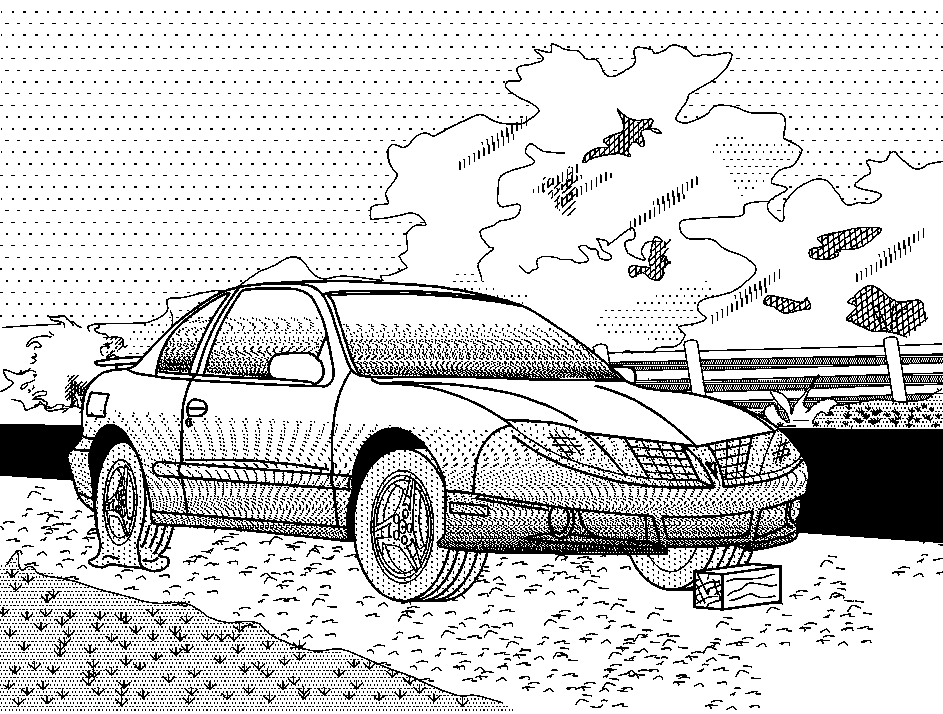
The following steps will tell you how to use the jack and change a tire.
Removing the Spare Tire and Tools
The equipment you'll need is located in the trunk.
- Start by folding the trunk carpet towards the front of the car.
- Remove the nut and cap that hold down the spare tire cover and remove the cover. Then, remove the nut and washer that hold down the spare tire and remove the tire.
- Remove the wing bolt that holds the jack and remove the jack and wheel wrench. The wheel wrench is held in place by two clips which are attached to the jack. Remove the wheel wrench from the jack. Fold out the socket portion of the wrench from the handle.
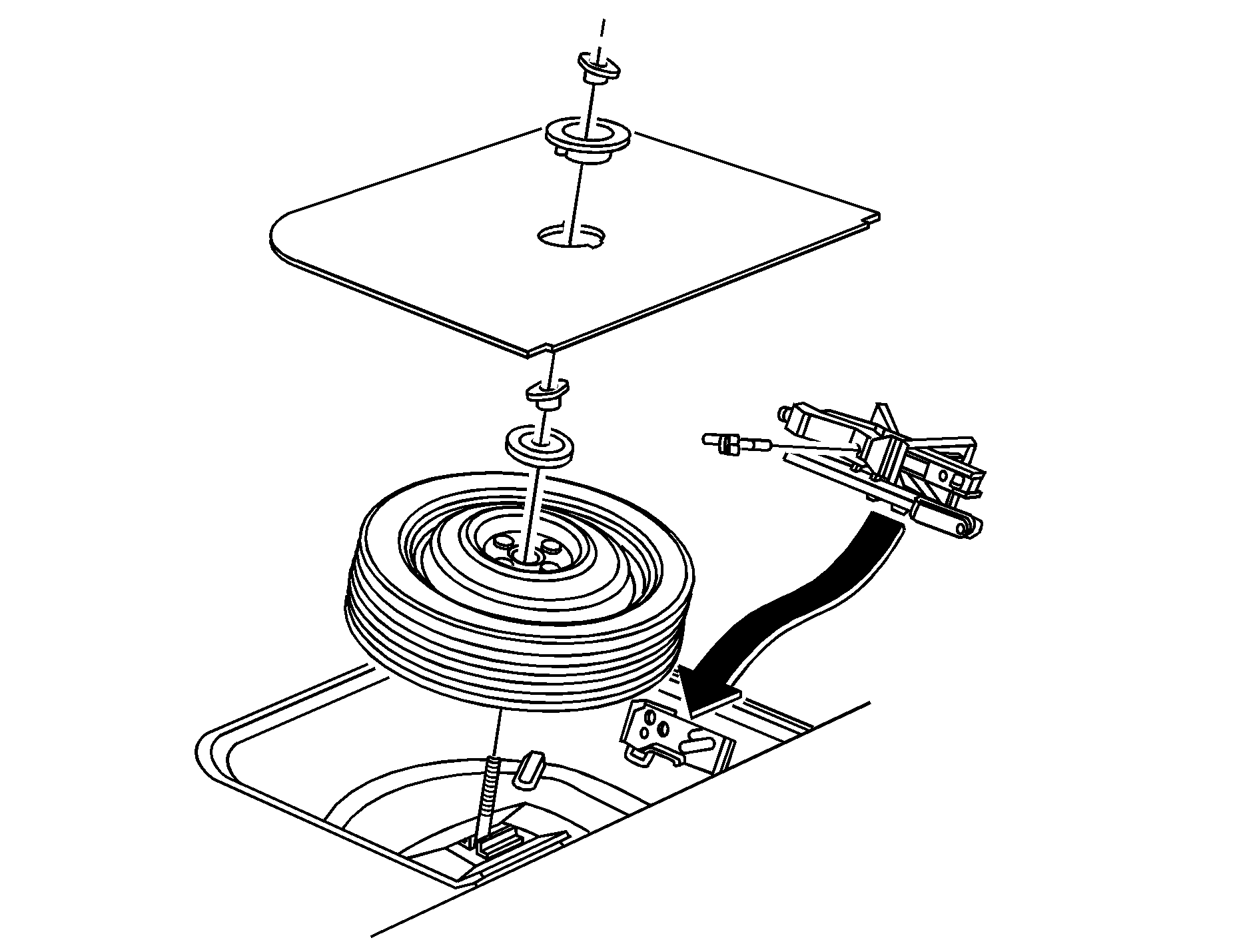
Removing the Flat Tire and Installing the Spare Tire
- Set the parking brake firmly.
- Put an automatic transmission shift lever in PARK (P), or shift a manual transmission to FIRST (1) or REVERSE (R).
- Turn off the engine and do not restart while the vehicle is raised.
- Do not allow passengers to remain in the vehicle.
- The jack has a bolt head at the end. Attach the wheel wrench to the jack bolt head and rotate the wheel wrench clockwise (to the right). That will raise the lift head a little. You must take off the wheel cover or hubcap to reach the wheel nuts.
- Now loosen all the wheel nuts, but DO NOT remove them. Now move the jack over to where the flat tire is.
- Position the lift head at the jack location nearest the flat tire. Saturn vehicles do not have jack notches. Position the jack close to the wheel opening, but make sure all of the jack's lift head is touching the jacking flange under the body. Do not place the jack under a body panel.
- Put the compact spare tire near you.
- Now, raise the car by rotating the wheel wrench on the jack to the right (clockwise). Stop when the flat tire and wheel are just off the ground.
- Take off the wheel nuts. Keep them near you. Take off the tire and wheel.
- Clean away any rust, corrosion, or dirt from the wheel, stud, mounting surfaces and spare wheel.
- Set the parking brake firmly.
- Put an automatic transmission shift lever in PARK (P), or shift a manual transmission to FIRST (1) or REVERSE (R).
- Turn off the engine and do not restart while the vehicle is raised.
- Do not allow passengers to remain in the vehicle.
- Put on the compact spare tire.
- Put the wheel nuts back on. The tapered end of the nut goes toward the wheel. Tighten each nut by hand until the wheel is held against the hub.
- Lower the car until the spare tire touches the ground. To do so, move the wheel wrench to the left (counterclockwise).
- Then, tighten the wheel nuts firmly in a crisscross sequence as shown.
- Lower the jack all the way and remove the jack from underneath the car.
- Tighten the nuts firmly with the wheel wrench. Don't try to put the wheel cover on the compact spare. It won't fit.
- Now put all the equipment back in the car.
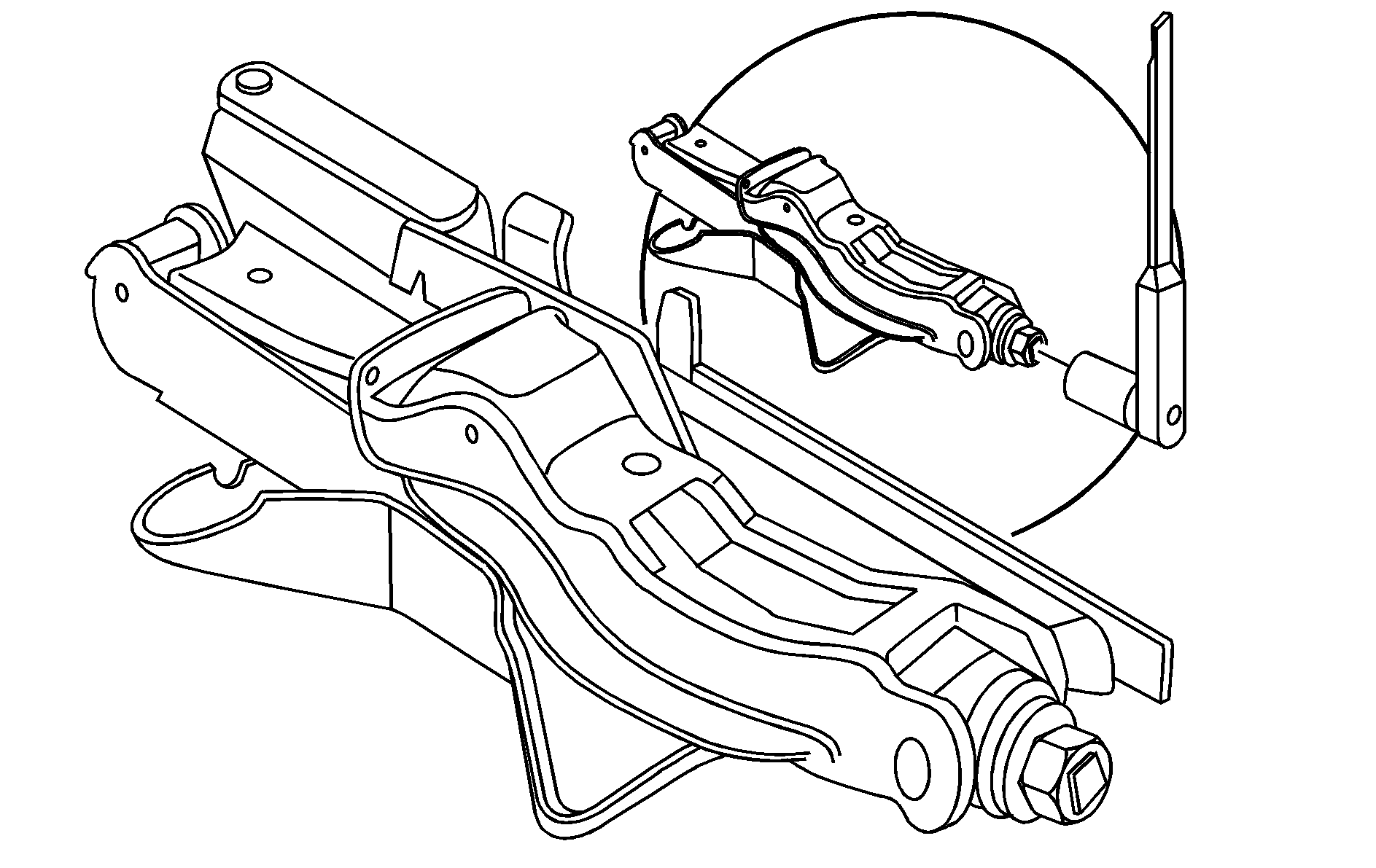
Caution: Changing a tire can be dangerous. The vehicle
can slip off the jack and roll over or fall on you or other people. You and they could
be badly injured or even killed. Find a level place to change your tire. To help prevent
the vehicle from moving:
To be even more certain the vehicle will not move, you should put blocks at
the front and rear of the tire farthest away from the one being changed. That would
be the tire on the other side, at the opposite end of the vehicle.
For steel wheels with full plastic covers and aluminum wheels with large circular center caps:
Removing Steel Wheels Full Plastic Covers Trim
| • | Loosen all four hex shaped plastic caps by turning the wrench counterclockwise. Do not try to remove the plastic caps from the cover or center cap. |
| • | Pull the cover or center cap away from the wheel and place it in the trunk. |
| • | When reinstalling full plastic covers or center caps, tighten all four plastic caps hand snug with the aid of a socket and tighten them with a wrench and additional quarter turn (90 degrees). |
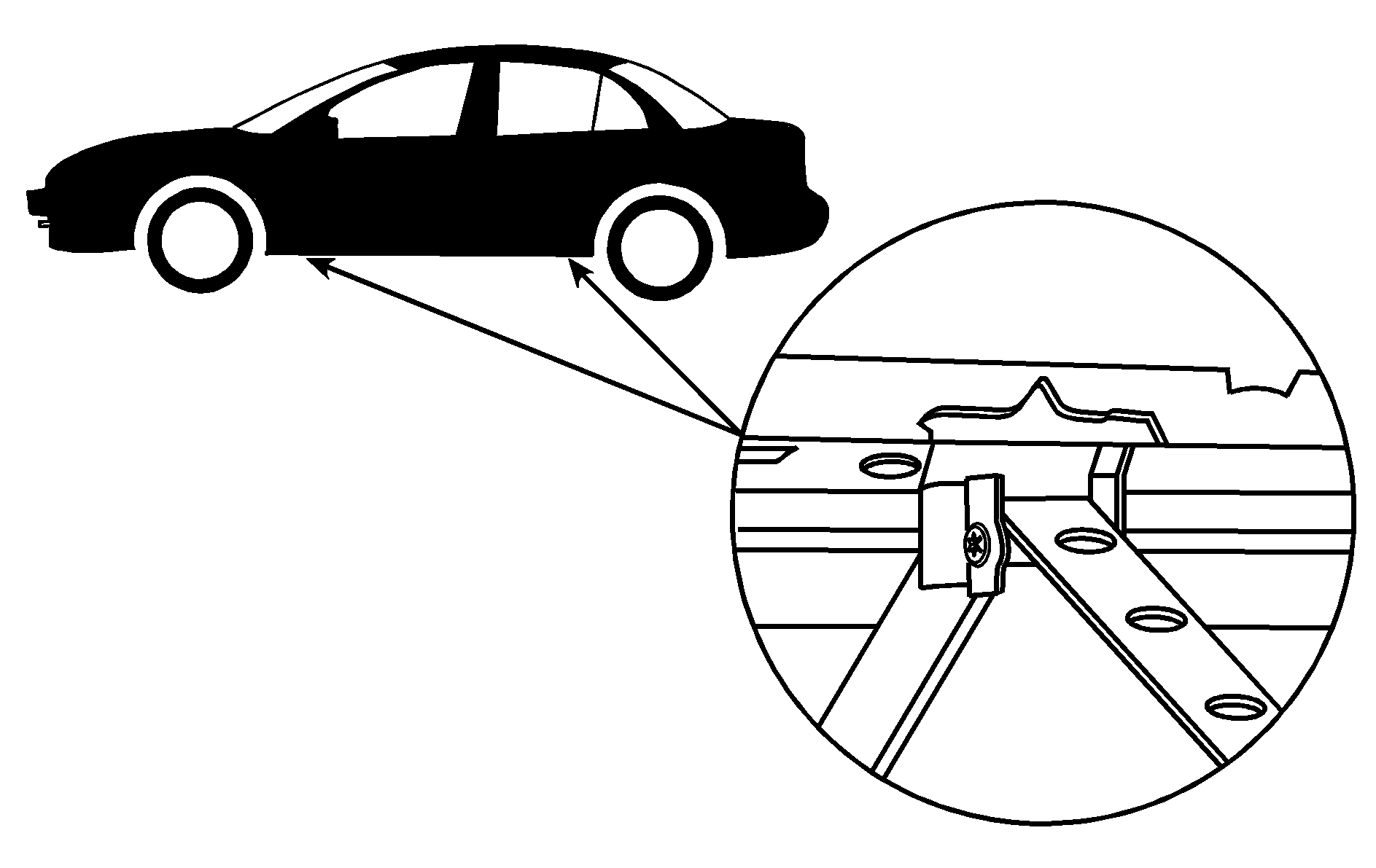
Notice: Make sure that the jack lift head is in the correct position or you may damage your vehicle. The repairs would not be covered by your warranty.
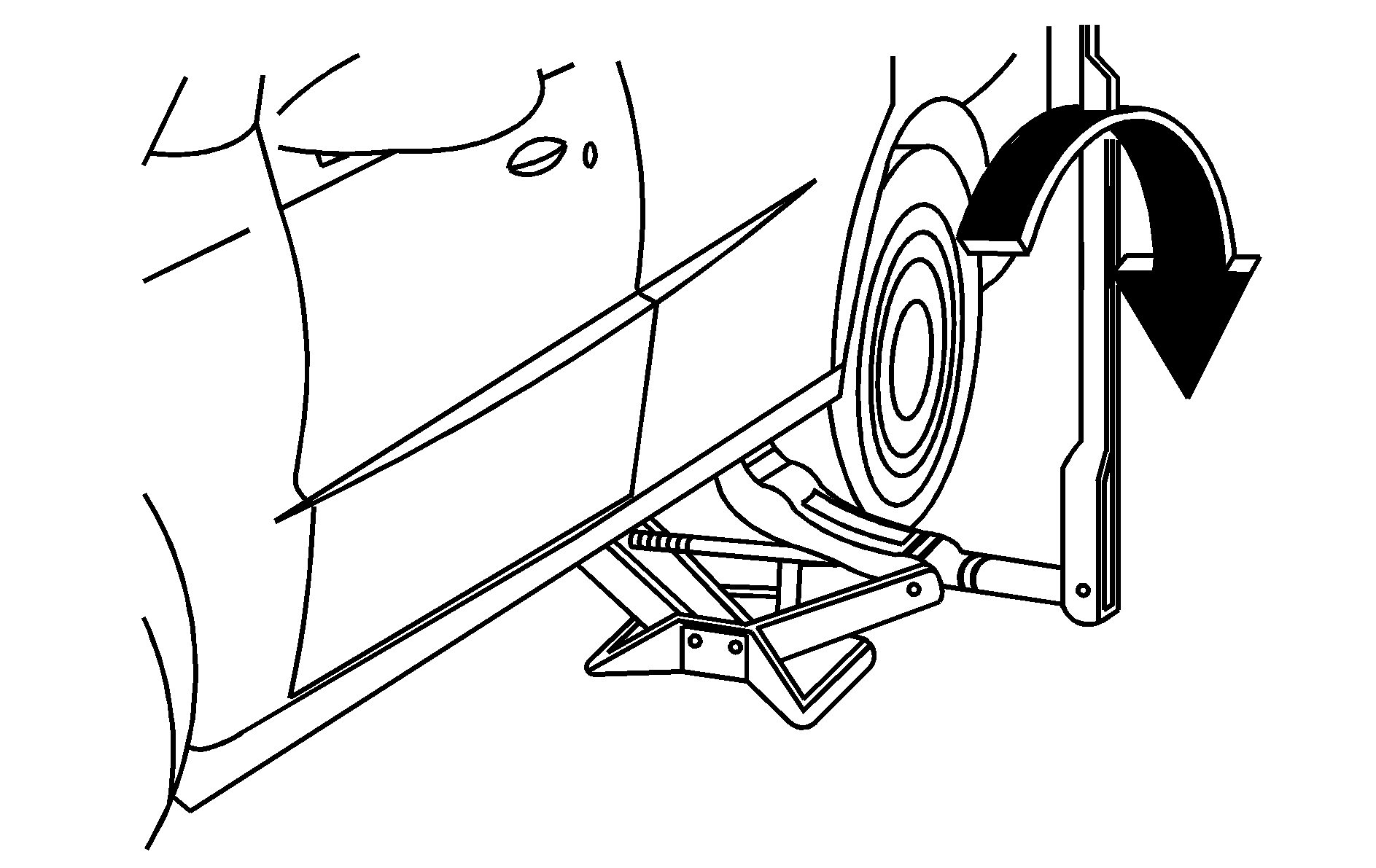
Caution: Rust or dirt on a wheel or other parts to which it is fastened, can make the wheel nuts become loose and eventually the wheel could come off and cause a crash. Always remove all rust and dirt from wheels and other parts.
Caution: Changing a tire can be dangerous. The vehicle
can slip off the jack and roll over or fall on you or other people. You and they could
be badly injured or even killed. Find a level place to change your tire. To help prevent
the vehicle from moving:
To be even more certain the vehicle will not move, you should put blocks at
the front and rear of the tire farthest away from the one being changed. That would
be the tire on the other side, at the opposite end of the vehicle.
Caution: Never use oil or grease on bolts or nuts because the nuts might come loose. The vehicle's wheel could fall off, causing a crash.
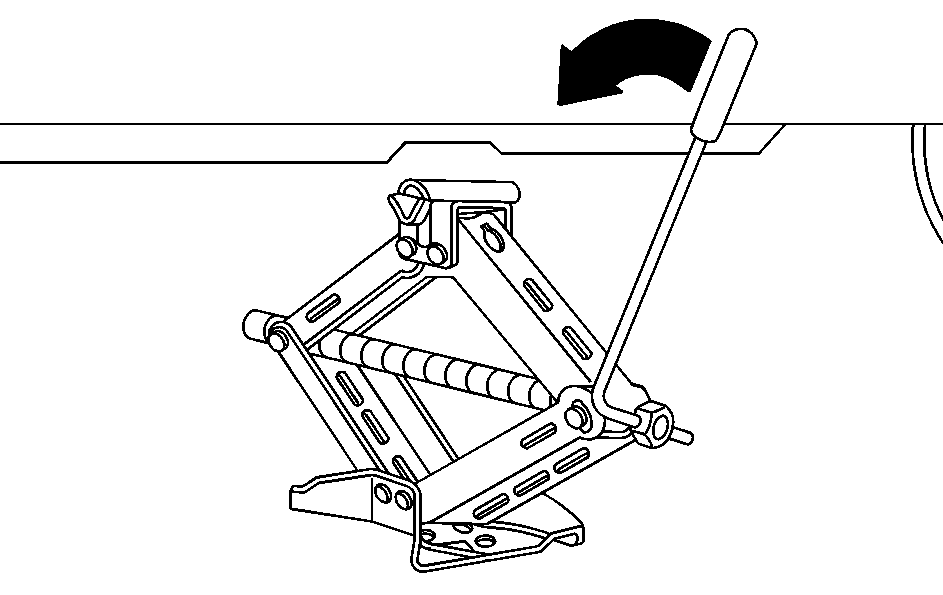
Caution: Incorrect or improperly tightened wheel nuts can cause the wheel to come loose and even come off. This could lead to a crash. If you have to replace them, be sure to get new original equipment wheel nuts. Stop somewhere as soon as you can and have the nuts tightened with a torque wrench to the proper torque specification. See Capacities and Specifications for wheel nut torque specification.
Notice: Improperly tightened wheel nuts can lead to brake pulsation and rotor damage. To avoid expensive brake repairs, evenly tighten the wheel nuts in the proper sequence and to the proper torque specification. See Capacities and Specifications for the wheel nut torque specification.


Storing the Flat or Spare Tire and Tools
Caution: Storing a jack, a tire, or other equipment in the passenger compartment of the vehicle could cause injury. In a sudden stop or collision, loose equipment could strike someone. Store all these in the proper place.

- Place the wheel wrench into the clip on the jack. Install the jack in the spare tire compartment and secure as shown on the jacking instruction label located in the trunk.
- Tilt the spare tire hold-down bolt as far forward as possible while keeping the bolt within the slot.
- Place the road wheel, face down, into the spare tire compartment. When placing the aluminum road wheel into the spare compartment, be very careful to avoid scraping the wheel face on the hold-down bolt and other hand surfaces. The hold-down bolt should pass through the rear most wheel vent hole. The road wheel should rest on the front edge of the spare tire compartment and on top of the jack. The road wheel will protrude above the trunk floor in this position.
- Place the plastic cap onto the hold-down bolt making sure the hold-down bolt is titled as far forward as possible and the deep portion of the plastic cap is toward the center of the road wheel.
- Place the first nut into the hold-down bolt and tighten down until it is snug against the plastic cap.
- Finally, place the metal washer and second nut onto the hold-down bolt and tighten down until it is snug against the first nut.
The compact spare tire is for temporary use only. Replace the compact spare with a full-size tire as soon as possible. See the storage instructions label to replace your compact spare into your trunk properly.
